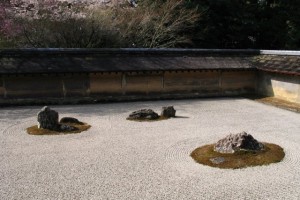By Paul Hibschman
I wandered around a lot. I think I have worked on seven Aikido mats (not counting seminars). I started this series with a physical description of my home dojo that was in every way dominated by Saetome Sensei. It is in D.C., and I would have occasion to visit neighboring dojo’s. One, the one over in Baltimore, seems it may have been as big as Butternut. It was not fancy but it was big. There and just about anywhere in D.C., I would see people I knew. What fascinated me early on was that each place had its own aura. Even the same people in different places seemed to behave differently.
It is in D.C., and I would have occasion to visit neighboring dojo’s. One, the one over in Baltimore, seems it may have been as big as Butternut. It was not fancy but it was big. There and just about anywhere in D.C., I would see people I knew. What fascinated me early on was that each place had its own aura. Even the same people in different places seemed to behave differently.
The D.C. dojo ran a lot of classes. I am not sure how many: mid-morning (?), several evening ones, at least one childrens’ class. I tried to go five times a week to the 6:30 a.m. one. It was a small class, and we became a tightly-knit subgroup. I was a slow learner and would not have advanced except for their constant help (after they decided I was serious.) One man ran almost all of these morning classes. I learned to hold him in great awe also. If I remember correctly, Fridays were by another teacher and were always weapons. Then I would make what other classes I could. There was only one mid-morning Saturday class and I tried to make it. Sometimes Sensei would teach it, but most of his classes were taught by what seemed to be called his senior students. When he was in town (most of the time), he taught one evening class a day.
Senior students is probably my name for them as a class of people. The dojo was a headquarters and there were shodans coming out of the woodwork. Every class was a mix of ranks, and I do not believe I ever went to a class where at least two of the students were black belts, some with real rank behind their belts so to speak. Yet a 2nd or 3rd degree belt might not be Senior Student, that is, a designated teacher. I was too low to understand the politics. It all just happened around me.
Frankly, I was always intimidated by Saetome’s classes. He seldom talked. He was always formal to the point of being stern. Off the mat, there was no small talk unless he initiated it. On his mat, no one talked. He demonstrated, we practiced, he demonstrated. His demonstrations were fast and often hard. He did not break a technique into sections. The learners were expected to do the best they could with what they saw. Sometimes, more knowledgeable students would pantomime an action or break it down into parts.
I was told later that this was Saetome’s method. In fact, I have often heard him make quick reference to it. He wanted us to learn to watch and to see. The correct technique was secondary. For the first year, I hardly understood hamni. I would agonize over which wrist had been grabbed and how.
This last paragraph may be the fulcrum upon which this reflection turns. Saetome was teaching Aikido in a big way: as a way of being with each other and as a way of seeing the life around us. The same people, in a near-by dojos, would revert to being martial artists. They would teach, talk, demand, compete, say what was the correct way, etc. Very, very different and only separated by miles and by a major philosophical divide.
It might have been different for others, but I survived on the kindness of those senior to me. I realize that this is not a system that works easily or at all in a smaller place. There is not the time or the will to drive silent class after silent class with little encouragement in a small environment. Me, or not just me, it was a joke that at testing time, those with time in grade and who had been asked to test, stayed after and worked with seniors. In class, we learned almost nothing of names. Every technique demonstrated was essentially a variation on the “real thing.” For a test, we were to know the name, and preform the “real thing.” To my amazement, Saetome sat through all of the tests. When I look back on it, those low-rank tests were boring in the extreme.
Paul, your perspective is fascinating. I like the concept of the dojo as life affirming, rather than just a place to learn martial technique. I think this is what is meant by budo, properly. Saotome Sensei’s dojo sounds like a very special place.
However, I also see the need for martial vigor. I recall what Bernath Sensei emphasized at our recent seminar, and his emphasis on martial intent.
Thanks again for sharing.